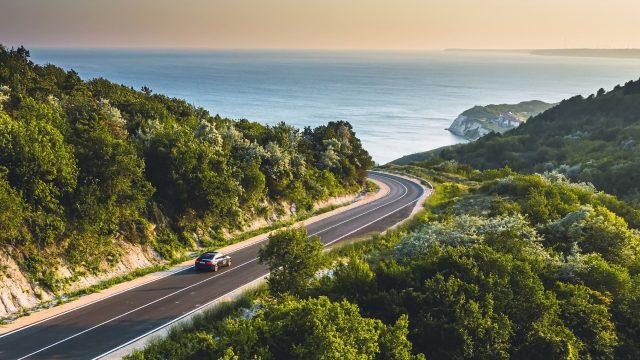Although La Palma is one of the largest of the Canary Islands, it is undoubtedly one of the lesser travelled. It’s a far cry from the mass tourism hotspots of Fuerteventura and Tenerife. You won’t find sardine-tin beaches, busy boulevards jam packed with restaurants or hoards of resorts here. Instead you’ll find a humble host of hostels, some genuine restaurants and tapas bars and relatively empty beaches. Explore a different side of the Canary Islands with our guide.
Introducing La Palma
La Palma has a traditional and wholly natural feel to it. Visitors come to appreciate and explore the varied and beautiful terrain. With lush forests and valleys, varied volcanic landscapes and rugged mountains to explore, La Palma is truly a wonderland for walkers of all abilities.
Go west …
The western side of the island is particularly rugged in places. With nothing to break the vast expanse of Atlantic Ocean until you reach the coast of Brazil, the coastline has been shaped and formed into nothing short of dramatic thanks to the exposure of the mighty power of the sea. During the winter months, the sea can be a bit rougher. Watching the waves crashing onto the rocks can be pretty impressive. There are numerous well-signposted walking trails to get stuck into.
Explore the Caldera de Taburiente National Park
You could easily spend days traversing the fabulous Caldera de Taburiente National Park which extends for over 4690 hectares. The nucleus of the park is formed from the interior of a massive
crater. It’s 8km across and over 1000 metres deep, rendering it one of the largest in the world. The oldest rock on the island is found here. The blanket of dense pine forest rolls on seemingly never-ending. You will be rewarded with a rich quantity of flora and fauna during your explorations, adding to the enjoyment. You can also visit the highest heights of the island; Roque de Los Muchachos. At 2426m, it’s the highest point, plus 12 other peaks providing stunning panoramic views.
Northern wildnerness
Los Tilos in the north of the island is a much more jungle-like exotic wilderness. Marvel at hidden waterfalls, tiny bridges and rocky faces poking through the thick woodland and greenery. There are plenty of hidden wonders waiting to be discovered in the sea of green. The entire area has in fact been declared a Biosphere Nature Reserve by UNESCO.
There are also numerous tunnels which criss-cross across the island, 13 in fact and there is a walk which begins from the visitor centre at Los Tilos. Walking alongside a very old water canal, you will embark upon an amazing adventure. Although you will always be able to see the light at the end of the tunnel, be sure to take a torch as it is still pretty dark inside.
The trickle of water in the canal next to you will guide in the right direction. Having been through all 13 tunnels, you will reach the source of the water. The springs of Marcos and Cordero at an altitude of 1400metres. You then begin your descent back down through dry riverbeds in the valley.
Book your trip to La Palma
The options for exploration of the island are near on endless. Depending on your skill and taste for adventure you can explore the island on your own or join a guided walking group. Take your pick and get stuck in! We’re sure you won’t be disappointed.





